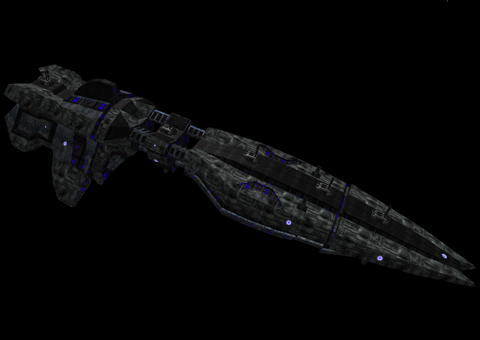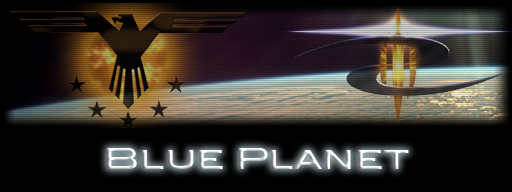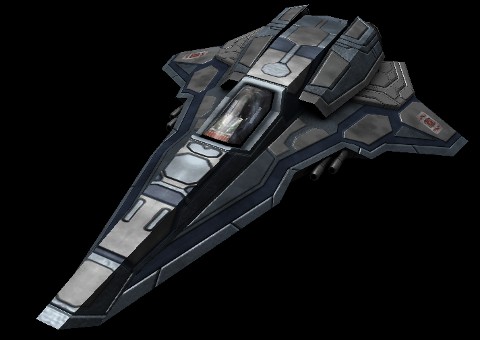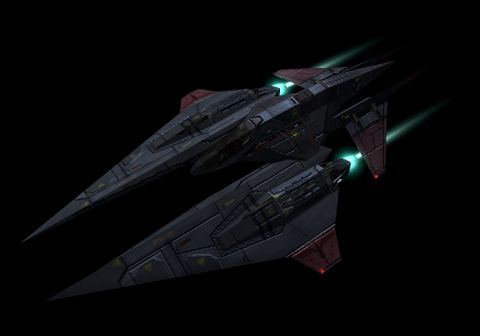Difference between revisions of "Blue Planet"
m (→Spacecraft: Added comma and "all".) |
m (→Weaponry: El Damned...) |
||
| Line 46: | Line 46: | ||
====Weaponry==== | ====Weaponry==== | ||
| − | Lessons learned during the [[Second Shivan Incursion]], at the cost of thousands of lives, prompted the GTVA to begin upgrading several warships in service after the Capella supernova, as well as to phase out older weapons that have been used for the past five decades and replace them with more modern weaponry. One of the Threat Exigency Initiative's primary goals is to produce better warship armaments and, to date, has produced three different types of anti-warship weaponry. At the forefront of this are the range of new beam cannons installed on the GTVA's newest line of warships, such as the [[HBlue|''Winter King'' heavy beam]] mounted at the bow of the ''Raynor'' destroyer, | + | Lessons learned during the [[Second Shivan Incursion]], at the cost of thousands of lives, prompted the GTVA to begin upgrading several warships in service after the Capella supernova, as well as to phase out older weapons that have been used for the past five decades and replace them with more modern weaponry. One of the Threat Exigency Initiative's primary goals is to produce better warship armaments and, to date, has produced three different types of anti-warship weaponry. At the forefront of this are the range of new beam cannons installed on the GTVA's newest line of warships, such as the [[HBlue|''Winter King'' heavy beam]] mounted at the bow of the ''Raynor'' destroyer, and the [[TerSlashBlue|''Bull Frost'' tactical slashing beam]] mounted on the ''Diomedes'' corvette. The second type of anti-warship weapons developed are anti-warship torpedoes, serving as secondary weapons on the ''Raynor'' and ''Titan'' destroyers as well as friendly artillery. The third and final type of anti-warship weapons are pulse cannons, serving as battery weapons on heavier ships. Both the [[TerPulse|''Hellstar'']] and [[STerPulse|''Riptide'']] pulse cannons are recent developments of [[Morgan Technologies]], and have yet to be fully integrated into GTVA battle doctrine. |
Much of the GTVA's fighter-mounted weaponry remains the same, although the [[Balor|Balor rapid-fire particle blaster]], so far the only fighter-mounted primary cannon developed by the Threat Exigency Initiative, adds a much-needed and fearsome complement to the standard-issue [[GTW Subach HL-7]]. The Balor was designed to serve and destroy everything short of a light cruiser, and it was designed to be far more versatile than nearly every other fighter-compatible primary gun in the GTVA arsenal. At the time of the Sol Gate's completion, the Balor was brand-new, and GTVA battle doctrine did not fully integrate it. By the time of the UEF-GTVA war, however, the Balor has seen widespread use in nearly every stage of the conflict. | Much of the GTVA's fighter-mounted weaponry remains the same, although the [[Balor|Balor rapid-fire particle blaster]], so far the only fighter-mounted primary cannon developed by the Threat Exigency Initiative, adds a much-needed and fearsome complement to the standard-issue [[GTW Subach HL-7]]. The Balor was designed to serve and destroy everything short of a light cruiser, and it was designed to be far more versatile than nearly every other fighter-compatible primary gun in the GTVA arsenal. At the time of the Sol Gate's completion, the Balor was brand-new, and GTVA battle doctrine did not fully integrate it. By the time of the UEF-GTVA war, however, the Balor has seen widespread use in nearly every stage of the conflict. | ||
Revision as of 16:09, 16 September 2010
Blue Planet is the overall name of a series of campaigns set 18 years after the events of FS2.
The Blue Planet project focuses on story telling first and foremost, detailing a possible explanation for the events in the original FreeSpace and FreeSpace 2, and then following it to a logical conclusion.
It is also renowned for its exceptional music selection and mission design.
Story
It is 2385, fifty years after the appearance of the Shivans at Ross 128 and the beginning of the Great War. Using Knossos-derived technology, the GTVA has finally completed the construction of a subspace portal, stabilising the subspace corridor linking Delta Serpentis to Sol, the birthplace of the Terrans. After sending numerous probes through the portal, the GTVA decides that the node has indeed stabilised, and proceeded to send in the real ambassadors.
Blue Planet: Age of Aquarius (AoA), released in 2007, introduced the universe, and describes the struggles and adventures of the GTVA's 14th Battlegroup, an elite force of ships sent on a mission to reestablish contact with Earth. As they take a detour through a parallel reality where the Lucifer succeeded in wiping out Earth during the events of the original FreeSpace, one officer gains insight into the greater forces at work in the fabric of the multiverse.
The first part of Blue Planet: War in Heaven (WiH), released in August 2010, details the final weeks of a civil war between the government of Earth and the GTVA after contact was reestablished. It focuses on the journey of a young woman torn between the ideals of her upbringing, and the necessities of fighting a war for the survival of the human race.
Missions
Age of Aquarius
- 1 22-mission campaign
War in Heaven
- 1 30-mission campaign (estimated)
- 3 single missions
Ships
Galactic Terran-Vasudan Alliance

Summary
The Blue Planet continuity begins in 2385, only 18 years following the NTF Rebellion and Second Shivan Incursion. Following the GTVA's production doctrine employed between the Great War of 2335 and the NTF Rebellion of 2367, a number of FS2-era ships are still used, although most FS1-era ships, by contrast, have been phased out. Ships in active production are determined by their age, popularity among pilots, practicality and irreplaceableness. At the same time, in response to the massive losses sustained as a result of the Second Shivan Incursion, the Alliance pushed forward the Threat Exigency Initiative, an extensive upgrading and redeployment project that spans the Terran arm of the GTVA. Lessons learned from the lack of proper logistical support in remote locations also prompted the introduction of a new "Logistics" class, non-combatant ships designed to serve as mobile installations.
The Threat Exigency Initiative, conceived as a more proper deterrent to the threat of future invasions, ushered in an age of new warships and battle doctrines inspired, ironically, by the Shivans, fighters that can operate more independently, and weapons designed to be as versatile as possible. Products of the Threat Exigency Initiative include the GTD Raynor, a three-kilometre destroyer mounting a powerful forward beam cannon, warship-mounted heavy torpedo launchers, fast-firing pulse weapons that serve as secondary and tertiary warship armaments, the Aurora heavy reconnaissance fighter, and the Balor, a rapid-firing, energy-efficient fighter-mounted particle blaster.
Warships
While many Capella-era warships remain in active production, most of the Great War-era warships have been phased out. The only remaining class of warship from the Great War that is still servicing the front lines is the GTD Orion. With the addition of the GTD Raynor into the ranks of the Terran fleet, the Orion's lengthy service to the Alliance has at last reached its final stages. Only a few Orion-class destroyers remain in active service. The Capella-era warships are supplemented by warships designed and pushed into production as a result of the post-Capella Threat Exigency Initiative.
Virtually all Capella-era warships remain in active service, although some warship classes have been sorted into different sub-classes. For instance, the Hecate-class, first commissioned as a destroyer during the NTF Rebellion, has since been sub-classified as a carrier following a mediocre performance in the anti-warship field during the Second Shivan Incursion. The effectiveness of the Aeolus cruiser during the Second Shivan Incursion, combined with cheaper manufacturing techniques, meant that the Alliance resumed production for a cruiser class that originally had production lines cut after only twenty-four vessels were commissioned. Although still officially classified as a cruiser, the deployment of the Aeolus in the modern era is much closer to a tactical gunboat and warship escort. The Deimos-class corvette now forms the core of Alliance corvette battlegroups, serving as an all-round warship.
The Threat Exigency Initiative ushered in a new generation of warships that are generally faster and more agile than their Capella-era counterparts and are equipped with better-placed anti-fighter defenses, as well as secondary and tertiary anti-warship armaments such as anti-warship torpedoes and pulse cannons. The most powerful warship brought into service as a result of this project is the GTD Raynor.
Spacecraft
Nearly all Great War-era spacecraft have been pulled from active service and sold off to third parties or used as training targets. The only two exceptions to this fate are the Ulysses fighter and Ursa assault bomber. Of these two, the Ulysses remains in limited production and is no longer used in front-line operations, while the Ursa, despite its incredibly lethargic speed and sluggish manoeuvrability, still retains its original role in the Alliance fleet, although no plans have been drawn up to create a new class of bombers taking after the design philosophies of the Ursa.
By sharp contrast to the current deployment of all Capella-era warships, a number of Capella-era spacecraft have been slated to be pulled from active service. The two most prominent ship classes befalling this fate are the GTF Myrmidon, cited as being a powerful but excessively large fighter by many former Rebel pilots who have flown it, as well as the GTF Erinyes, deemed to be too complicated to improve upon. At the opposite end of the spectrum are ship classes such as the GTB Artemis and GTF Perseus, the former now mass-produced as the Alliance's main strike bomber, and the latter now reclassified as the Alliance's primary space superiority fighter and deployed as such.
Four fighter classes and one bomber class have been brought into service as a result of the Threat Exigency Initiative: the Aurora heavy reconnaissance fighter, sporting enhanced sensors that can navigate the thickest nebula and detect stealth ships, all packaged in a decently armoured spaceframe; the Draco interceptor, with an insanely high velocity rating allowing it to serve as an interceptor across several warships at once; the Atalanta advanced space superiority fighter, with its high speed and agility as well as excellent weapons compatibility; the GTF Nyx, a gunship-armed fighter touted to replace the Erinyes; and the GTB Rhea, a strike bomber with an asymmetrical weapons configuration that is a statistical success in bomber squadrons.
Weaponry
Lessons learned during the Second Shivan Incursion, at the cost of thousands of lives, prompted the GTVA to begin upgrading several warships in service after the Capella supernova, as well as to phase out older weapons that have been used for the past five decades and replace them with more modern weaponry. One of the Threat Exigency Initiative's primary goals is to produce better warship armaments and, to date, has produced three different types of anti-warship weaponry. At the forefront of this are the range of new beam cannons installed on the GTVA's newest line of warships, such as the Winter King heavy beam mounted at the bow of the Raynor destroyer, and the Bull Frost tactical slashing beam mounted on the Diomedes corvette. The second type of anti-warship weapons developed are anti-warship torpedoes, serving as secondary weapons on the Raynor and Titan destroyers as well as friendly artillery. The third and final type of anti-warship weapons are pulse cannons, serving as battery weapons on heavier ships. Both the Hellstar and Riptide pulse cannons are recent developments of Morgan Technologies, and have yet to be fully integrated into GTVA battle doctrine.
Much of the GTVA's fighter-mounted weaponry remains the same, although the Balor rapid-fire particle blaster, so far the only fighter-mounted primary cannon developed by the Threat Exigency Initiative, adds a much-needed and fearsome complement to the standard-issue GTW Subach HL-7. The Balor was designed to serve and destroy everything short of a light cruiser, and it was designed to be far more versatile than nearly every other fighter-compatible primary gun in the GTVA arsenal. At the time of the Sol Gate's completion, the Balor was brand-new, and GTVA battle doctrine did not fully integrate it. By the time of the UEF-GTVA war, however, the Balor has seen widespread use in nearly every stage of the conflict.
While the GTM Trebuchet is now commonly used as a long-range heavy missile for destroying slower, heavier ships, the Alliance have also pushed a new missile into production lines—the GTM TAG-C. This, the third and final iteration of the Target Acquisition and Guidance line of missiles, not only retains the painting beacon of the GTM TAG-A and aspect-seeking technology of the GTM TAG-B, but combines both with a highly sophisticated targeting beacon that will, on impact, transmit authorisation codes to a local friendly warship. Any large vessel unlucky enough to be hit by a TAG-C will have to deal with the barrage of anti-warship torpedoes that emerge from subspace. The TAG-C enables even fighters to deliver the same warship-shattering punch as an assault bomber.
United Earth Federation
Summary
In the fifty years following the collapse of the Sol-Delta Serpentis jump node, the Galactic Terran Alliance was reorganised into the United Earth Federation, or UEF, headed by the Global Ubuntu Party.
The Ubuntu Party placed emphasis on economic recovery and political stability, rather than military strength. What was left of the old GTA military was scrapped and slimmed down to suit the need of only being able to maintain order throughout much of an entire star system. Standard military doctrine in the UEF places emphasis on frigates that can serve as mobile carriers and operate in remote locations for lengthy periods, as well as versatile fighters that can be reassigned to numerous roles in a single operation. The main base of operations for each of the UEF's three fleets is a Solaris-class destroyer, a formidable carrier and command vessel that is never deployed on the front lines unless absolutely necessary.
Warships
The UEF only has three destroyers in active service, all of them Solaris-class destroyers. Each of these destroyers serve as a base of operations to the Federation's three fleets, as well as their commanding officers. Originally considered to be "a solution to a non-existent problem", the Solaris, Toutatis and Eris now serve at the very centre of the UEF's battle doctrine and, despite being designed to effectively neutralise an attack from any direction, are rarely seen on the front-lines. Instead, most military operations are carried out either by the fighter squadrons within these fleets or by smaller, faster frigates and cruisers assigned to each fleet.
Frigates and cruisers make up the Federation's primary attacking force. The two frigate classes currently in active service, the Karuna and Narayana, both sport a small hangar capable of housing a small fighter squadron, and the sole cruiser class, the corvette-sized Sanctus, is used in almost the same manner as the GTVA deploys the Deimos. Although every frigate and cruiser in the Federation is assigned to one of the three fleets, they are often deployed on their own, away from the Solaris-class destroyer that serves as their fleet's home base.
Spacecraft
The Federation makes heavy use of high-performance spacecraft that are generally much more agile and versatile than their GTVA counterparts. Almost every fighter class is capable of reverse thrust, as well as reverse afterburn, adding to their overall versatility on the field. The Federation's main space superiority fighter is the UEF Uhlan, an all-round fighter capable of mounting Jackhammer anti-subsystem torpedoes. Other common ships include the UEF Kentauroi, the Federation's cross between the GTVA's Nyx and Perseus fighters, the UEF Uriel, a heavy assault fighter sporting a long-range gauss cannon, and the UEB Durga, an assault bomber with the firepower to level entire cities. The Federation also produces an additional class of spacecraft, the UEF Lao Tze, used primarily by the elite Knights of the White Brotherhood for defensive missions where the escort target is a VIP.
Weaponry
While the GTVA have spent decades developing beam and energy-based weaponry, Federation anti-warship armaments, on the other hand, follow a more traditional kinetic-based principle. The primary stopping power of the UEF's two frigate classes, the Karuna and Narayana, are a pair of powerful bow-mounted heavy mass drivers that are complemented by their own targeting system, allowing them to incapacitate crucial enemy subsystems or turrets at will. The Solaris destroyer's primary weapons, however, come in the form of twelve heavy torpedo launchers that can easily decimate anything short of a superdestroyer in a matter of minutes. Secondary armament on all ships are made up of a mixture of anti-fighter tracers, flak guns and smaller anti-subsystem torpedo launchers.
The technology that powers Federation fighter-mounted weaponry, although crude and slightly dated as compared to the much greater level of sophistication seen in Alliance weaponry, is nonetheless just as effective, if not more so. The standard-issue SCWS-1 Vulcan is a rapid-firing plasma cannon that can easily track torpedoes and even the fastest ships produced by the Alliance, while the slightly heavier SCWS-2 Maul sacrifices refire rate for even more damage per shot. In the many decades since the Great War, the legendary GTW Prometheus has been remade into the SCWS-6 Rapier, the most powerful fighter-compatible plasma weapon available to the standard Federation pilot, capable of Swiss-cheesing even the heaviest fighters in the Alliance with a few shots. Federation gunships such as the Uriel-class mount a third weapon: a long-range anti-hull ammo-based gauss cannon called the Archer, designed to obliterate turrets and subsystems from beyond regular retaliation range.
The UEF sports a slightly wider variety of secondary weapons compared to the GTVA. In addition to the regular Hellfire dumbfire missile, Javelin aspect-seeking dogfight missile, Grimler heavy missile and Paveway anti-subsystem missile, as well as three anti-warship torpedoes, the Federation also produces two fire-and-forget swarm missiles, called the Dirk and Dart, as well as the dreaded Slammer suppression missile, an aspect-seeking cluster missile containing heat-seeking explosive charges. While the Dirk and Dart provide Federation pilots with a third tier of dogfight missiles to choose from, the Slammer, on the other hand, has gained a reputation among the GTVA for being a fighter- and bomber-killer, capable of destroying entire wings with one hit, and is the most feared weapon in the UEF's arsenal of missiles.
Development
Original Concept
- "Wow."
- —excerpt of Reply #60 of the original Age of Aquarius release thread, by Jeff Vader [1]
Blue Planet started off as a one-man project by Darius, much akin to how The Procyon Insurgency was created. When Age of Aquarius was released, several members of the community pointed out numerous errors and problems with the campaign, including crashes, missing effects, and empty tech room descriptions. As a consolation, these members also added praise to the portions of Age of Aquarius that did play out as planned, adding special mention to the harder missions, such as Keepers of Hell, and the music used in other missions, such as Forced Entry. The numerous errors, glitches and issues prompted Darius to release a patch only two days after it was first released. Almost immediately after the patch was released, comments on the campaign shifted from its issues and praise to praise only. Much of the initial praise was targeted at three aspects of the campaign:
- mission design and difficulty;
- background music; and
- storyline.
Age of Aquarius also came in for special praise as it made extensive use of FS2_Open's cutscene feature, which was relatively new and unused at the time.
The Team
- "Very funny, Goob."
- —the first post on the Blue Planet board, by NGTM-1R [2]
Blue Planet as a project team, however, did not take off until about ten months later, when Age of Aquarius began to be relayed to newcomers as a recommended FS2_Open campaign, alongside stalwarts such as Derelict and Warzone. The formation of the Blue Planet board on the Hard Light Productions Forum's Hosted Projects Section—a section of the forums reserved only for the most active hosted projects on HLP—was initially viewed as a joke, but ultimately became the catalyst needed for the formation of the project team as it is today. Over the course of the next few months, the size of the Blue Planet team grew rapidly. Initially comprising only Darius, as of August 2010, the Blue Planet team is made up of sixteen core members and six beta-testers.
War in Heaven
Not too long after the release of Age of Aquarius, Darius had finished conceiving a storyline for War in Heaven. However, he chose to wait until enough positive feedback was received from members of HLP before attempting to work on it. The development cycle of WiH was accelerated by rapid expansion of the project team from 2009 to early 2010, as well as the use of subversion, enabling all members of the team to work on the same version of the project.
Releases
Age of Aquarius was first released on October 3, 2007, and the first patch for it was released two days later on October 5. In February 2010, AoA was rereleased with voice acting, reorganized modpack, and new assets.
The first part of War in Heaven, consisting of the first two acts (15 missions) was released on August 7, 2010.
Developers
Project Staff
- Darius — Project Lead
- Axem — Just another FREDder
- Belisarius — Music composer
- Daddy Warhol — Music composer
- Dilmah G — Testing, Mission designer
- Dragon — Texture artist
- Esarai — Modeller
- General Battuta — Voice acting managing, Testing, Mission designer
- Herra Tohtori — Skybox artist
- Iss Mneur — Voice acting management assistance
- Nighteyes — Effects artist
- Rian — Voice acting managing
- Steve O — Modelling
- The E — Interface art, Voice acting management assistance
- Wanderer — Effects artist
- Zacam — Testing, Mod pack management


